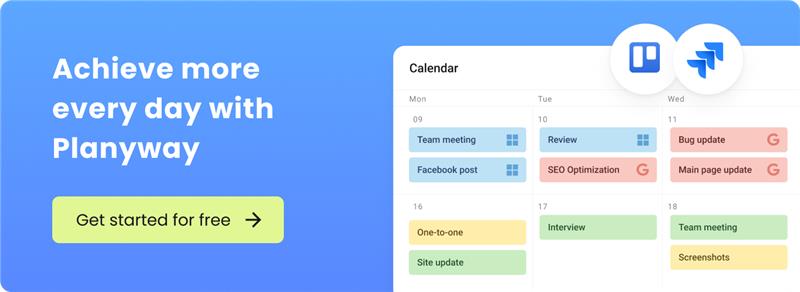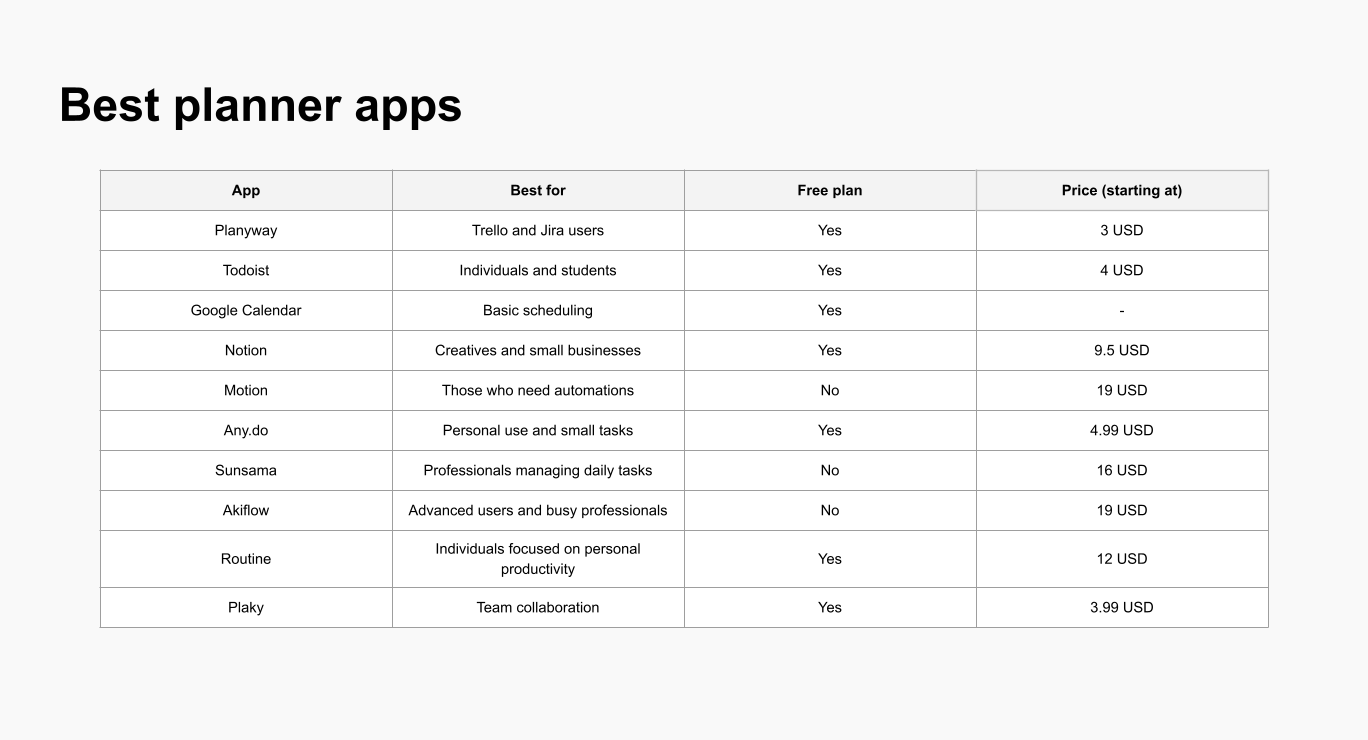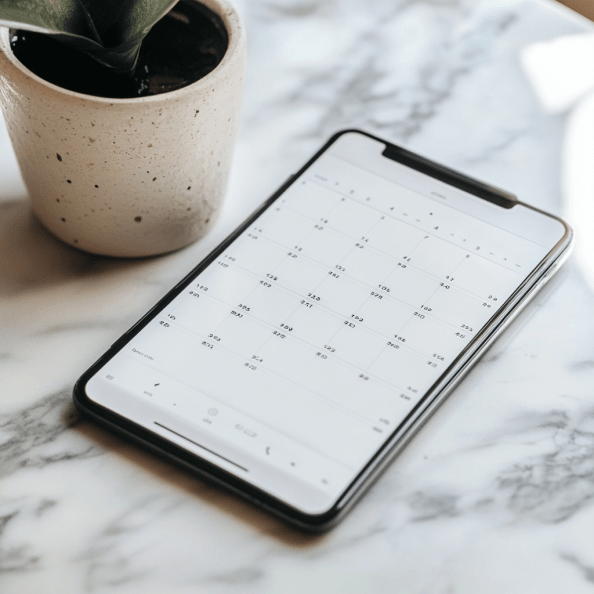Best Digital Calendar: Top 6 Apps to Maximize Productivity
10 Best Planner Apps for 2025: Stay Organized and Boost Your Productivity
Did you know that 92% of people say better planning improves their productivity? But finding the right app can be a challenge. In this guide, we’ll explore the best planner apps for staying organized, meeting goals, and managing your time efficiently. From powerful task management tools to sleek calendar integrations, we’ve got the top apps for every need.
Key Takeaways:
- Planyway — best for personal and team planning in Trello and Jira
- Todoist — ideal for task prioritization
- Google Calendar — best for ubiquity and ease of use
- Notion — ideal for control over how you organize your information
- Motion — best for automatic scheduling
- Any.do — best for those who value minimalism
- Sunsama — best for daily planning
- Akiflow — best to centralize tasks from different tools into one platform
- Routine — best for habit tracking and scheduling
- Plaky — best for team collaboration
Key Features to Look for in a Planner App
Here are the essential features to consider when selecting a planner app to ensure it fits your lifestyle and boosts your productivity:
- Task management: explain the need for creating and prioritizing to-do lists.
- Integration capabilities: highlight syncing with calendars, email, and other tools.
- User-friendly interface: ease of use for beginners and advanced users alike.
- Customization: ability to tailor layouts and features to personal preferences.
- Cross-platform availability: access on mobile, desktop, and web.
Top 10 Best Planner Apps in 2025
1. Planyway — Best for Project and Time Management in Trello and Jira
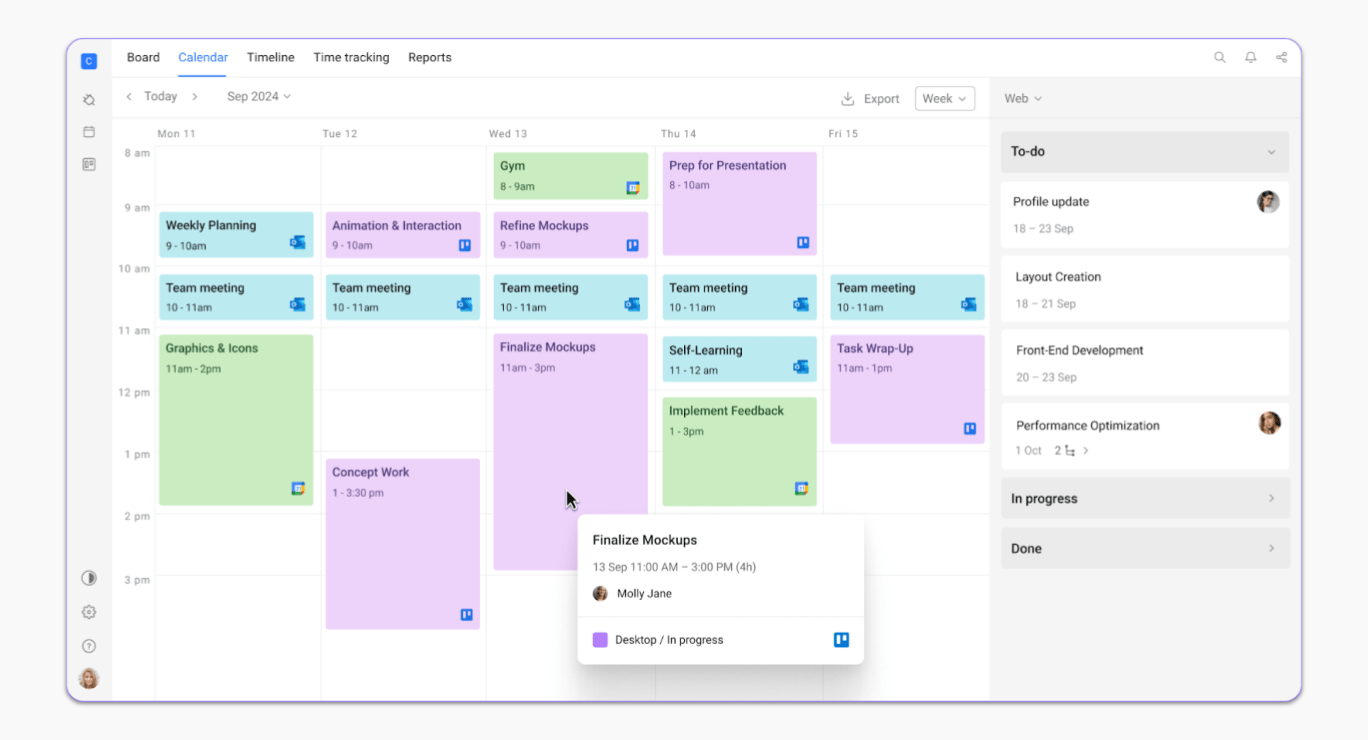
Key Features:
- Task and time management
- Integration with Trello, Jira, and Google Calendar, Outlook
- Hourly, daily, weekly, monthly calendars and multiple timeline views
Pros: Versatile, great for collaborative projects
Cons: Limited offline functionality
Pricing: Free for basic use, premium starts at $3/month
Best For: Great both for individuals and teams
2. Todoist — Ideal for Task Prioritization
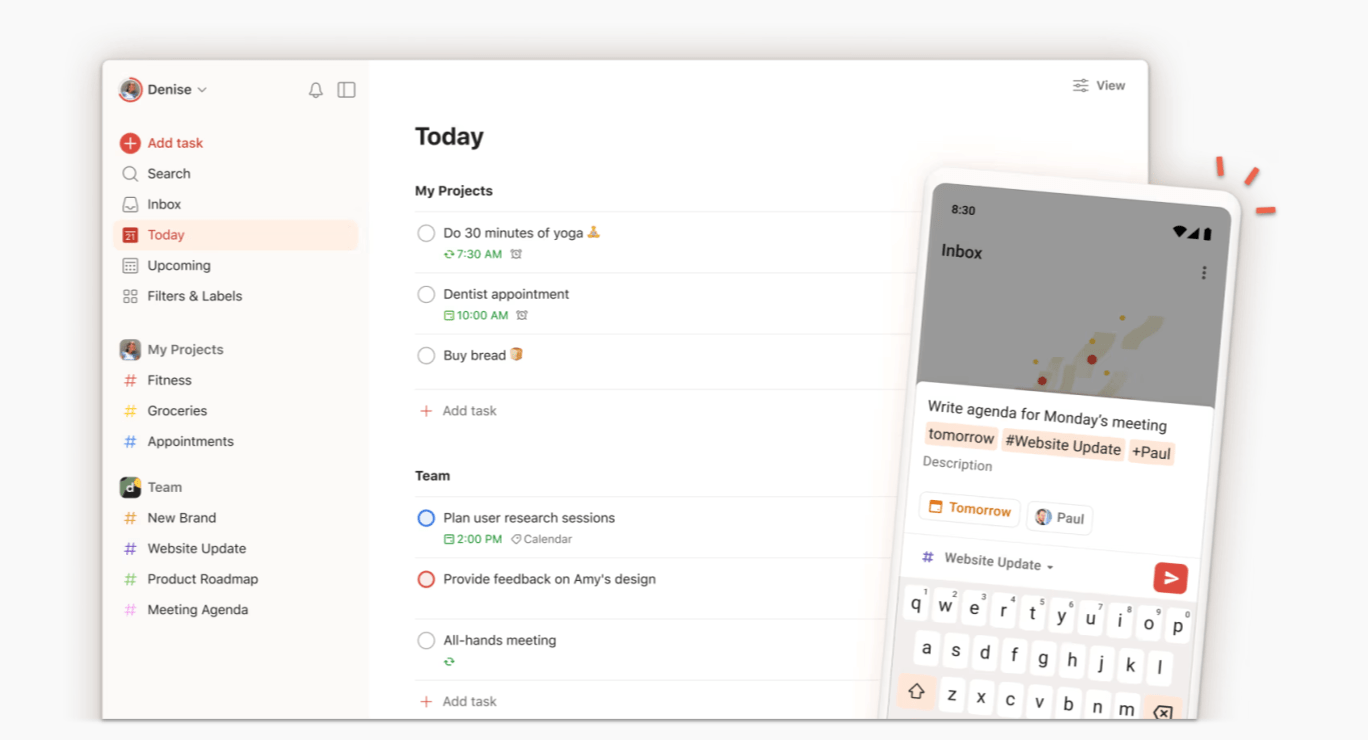
Key Features:
- Smart task scheduling and prioritization
- Integration with email and calendar apps
- Gamified productivity tracking (Karma)
Pros: Simple interface, easy to use
Cons: Limited advanced features for free users
Pricing: Free; Pro plan starts at $4/month
Best For: Individuals and students
3. Google Calendar — Best for Simplicity and Scheduling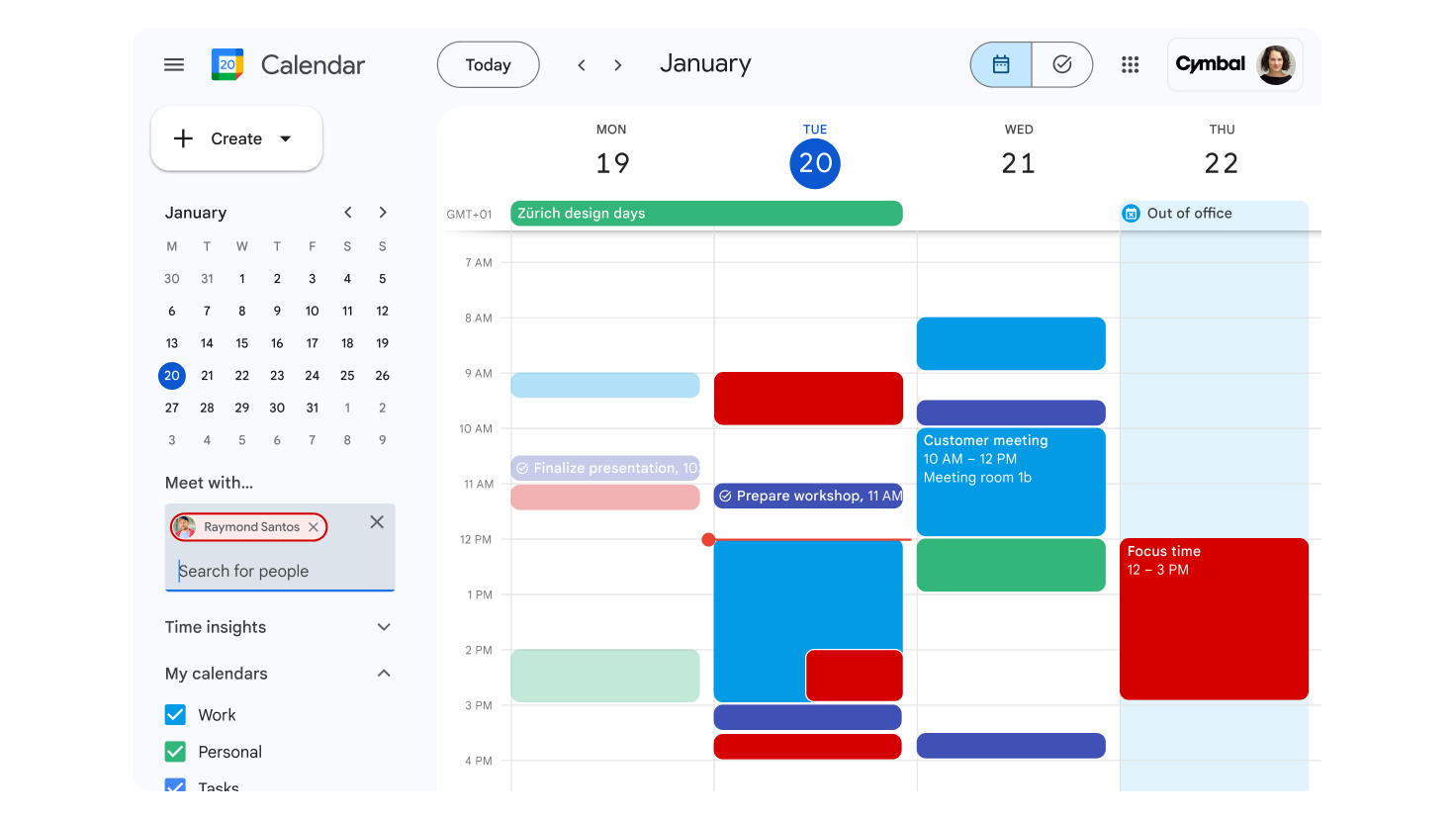
Key Features:
- Event scheduling and reminders
- Integration with Gmail
- Color-coded calendar views
Pros: Free, widely accessible
Cons: Lacks robust task management features
Pricing: Free
Best For: Basic scheduling and time management
4. Notion — Most Versatile for Personal and Work Projects
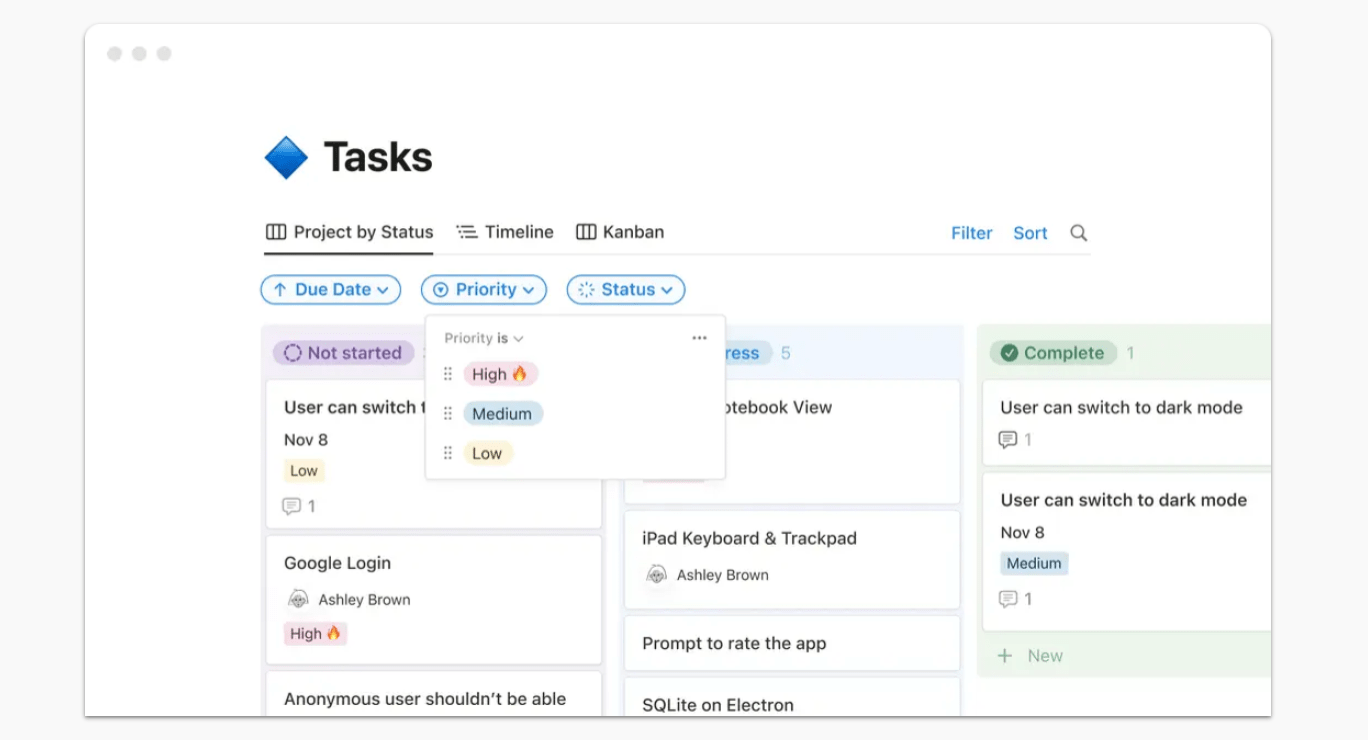
Key Features:
- Customizable databases and templates
- Collaboration tools for teams
- All-in-one notes, tasks, and planning platform
Pros: Highly customizable
Cons: Can be overwhelming for beginners
Pricing: Free; premium plans start at $9.5/month
Best For: Creatives and small businesses
5. Motion — Best for Automatic Scheduling
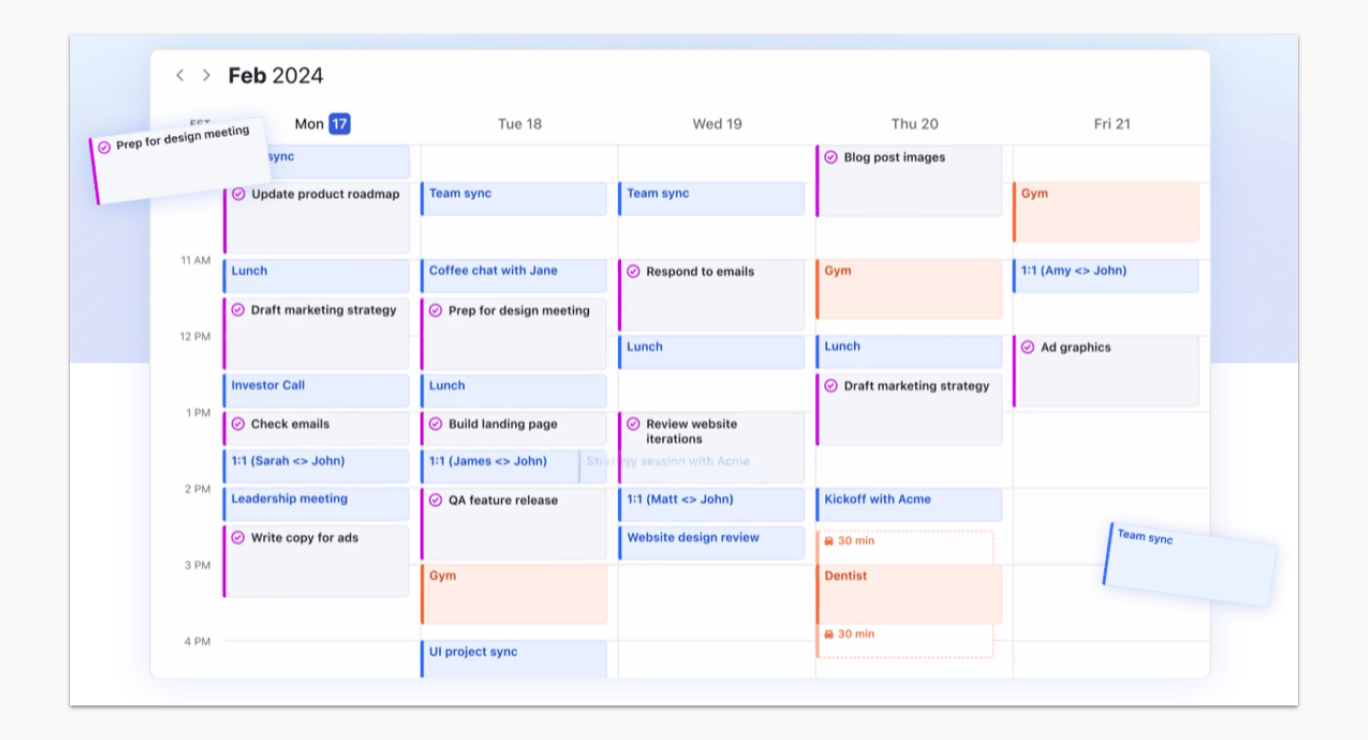
Key Features:
- AI-powered task prioritization
- Automatic calendar scheduling
- Unified task and meeting planner
Pros: Time-saving automation
Cons: Higher price point
Pricing: Starts at $19/month
Best For: Busy professionals
6. Any.do — Best for Simplicity and Task Management
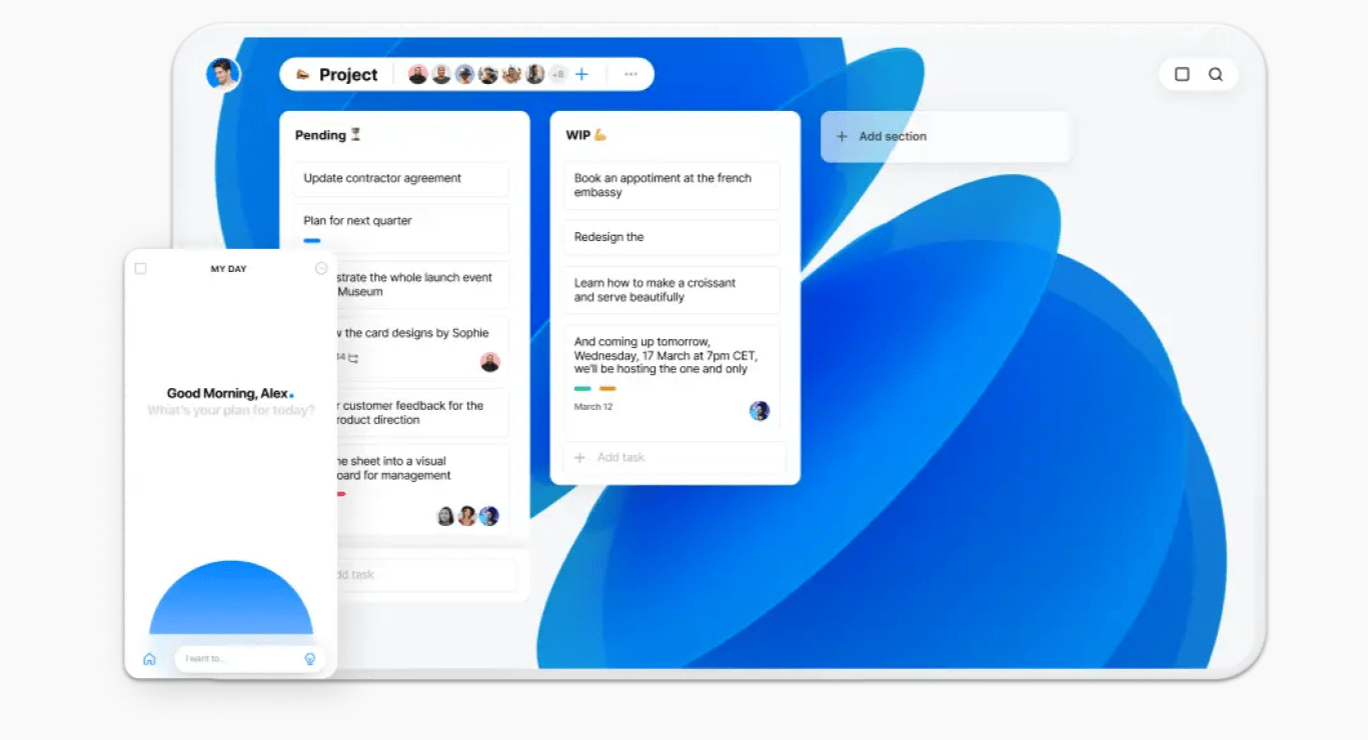
Key Features:
- Task lists, reminders, and calendar integration
- Voice-to-task functionality
Pros: Clean and user-friendly interface
Cons: Limited features in the free version
Pricing: Free; premium plans start at $4.99/month
Best For: Personal use and small tasks
7. Sunsama — Best for Daily Planning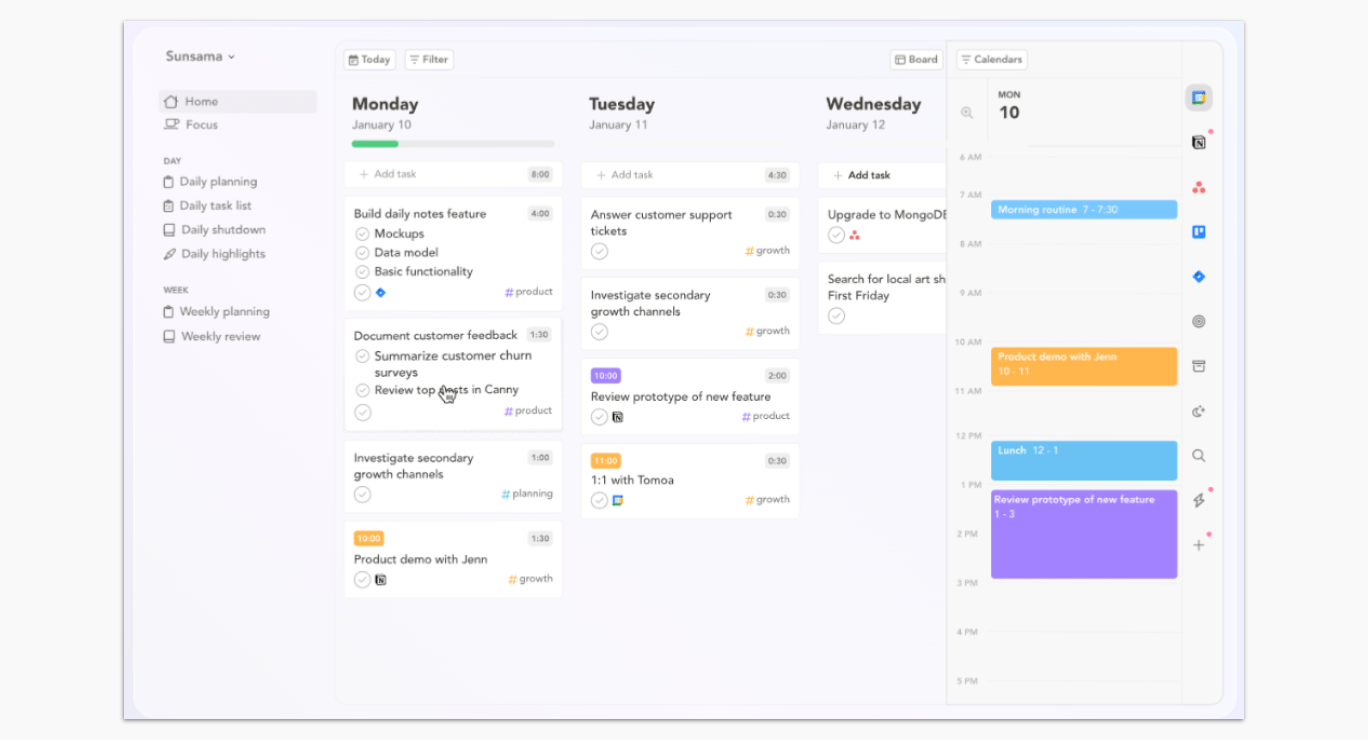
Key Features:
- Focused daily planner
- Integration with Slack, Asana, and Trello
- Timeboxing for tasks
Pros: Encourages intentional daily planning
Cons: Steep learning curve
Pricing: Starts at $16/month
Best For: Professionals managing daily tasks
8. Akiflow — Best for Streamlined Task Management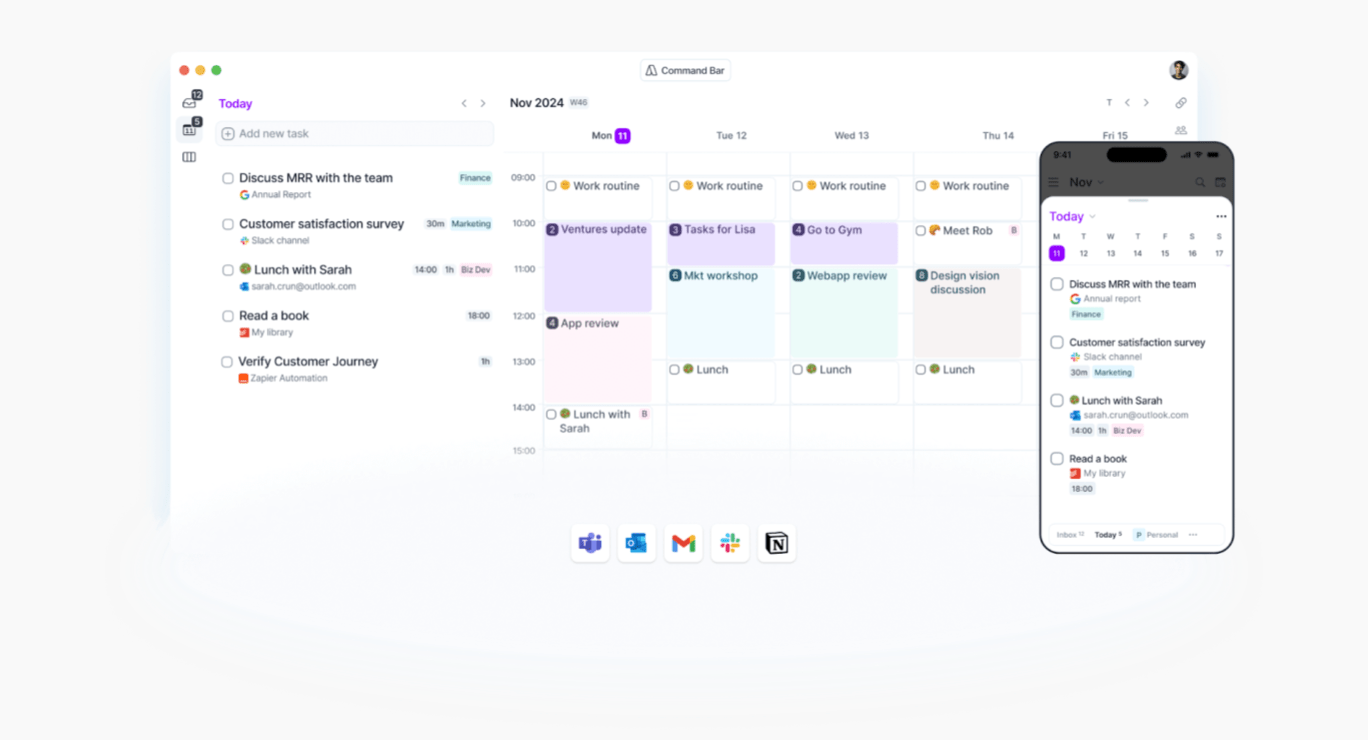
Key Features:
- Unified inbox for tasks and notifications
- Keyboard shortcuts for quick task entry
- Integration with major productivity tools
Pros: Fast and efficient workflow
Cons: No free plan
Pricing: $19/month
Best For: Advanced users and busy professionals
9. Routine — Best for Habit Tracking and Scheduling
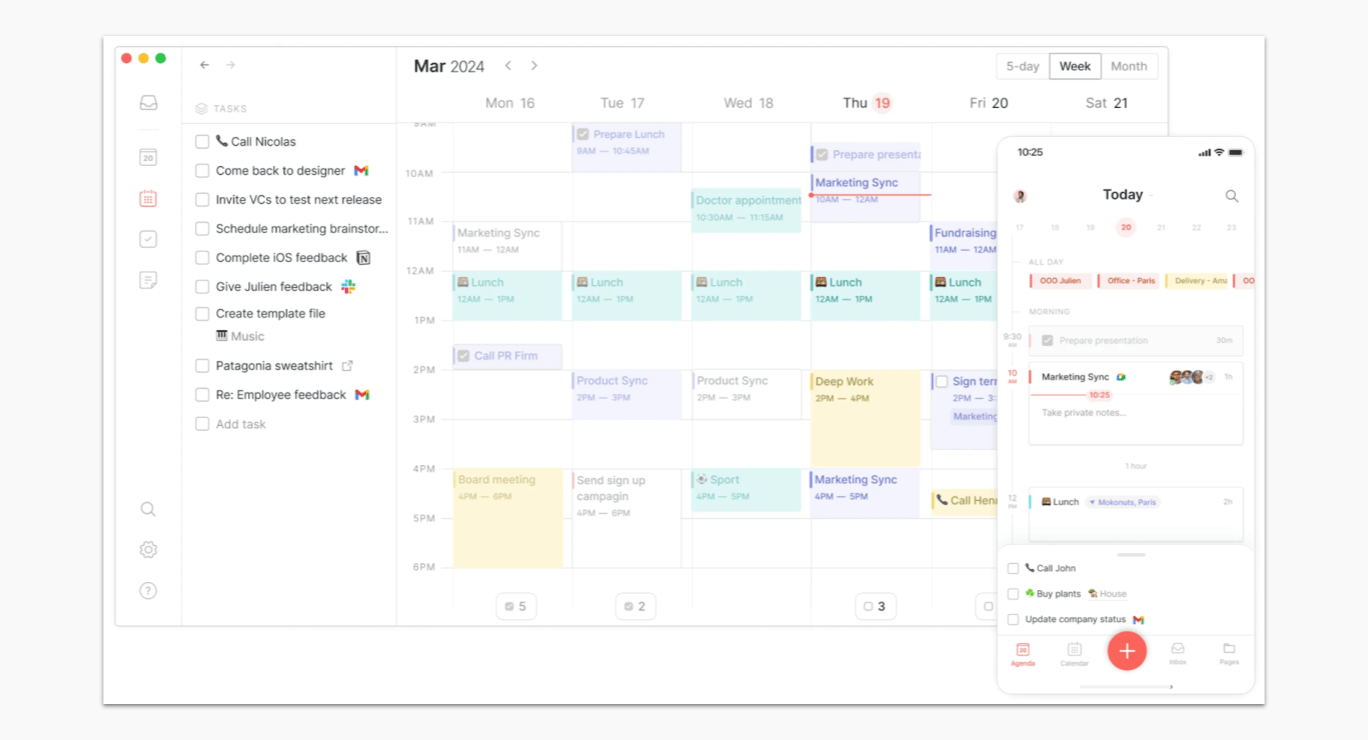
Key Features:
- Combines tasks, notes, and calendar in one view
- Built-in habit tracker
- Offline access
Pros: Unique habit-tracking feature
Cons: Limited integrations
Pricing: Free; premium starts at $12/month
Best For: Individuals focused on personal productivity
10. Plaky — Best for Team Collaboration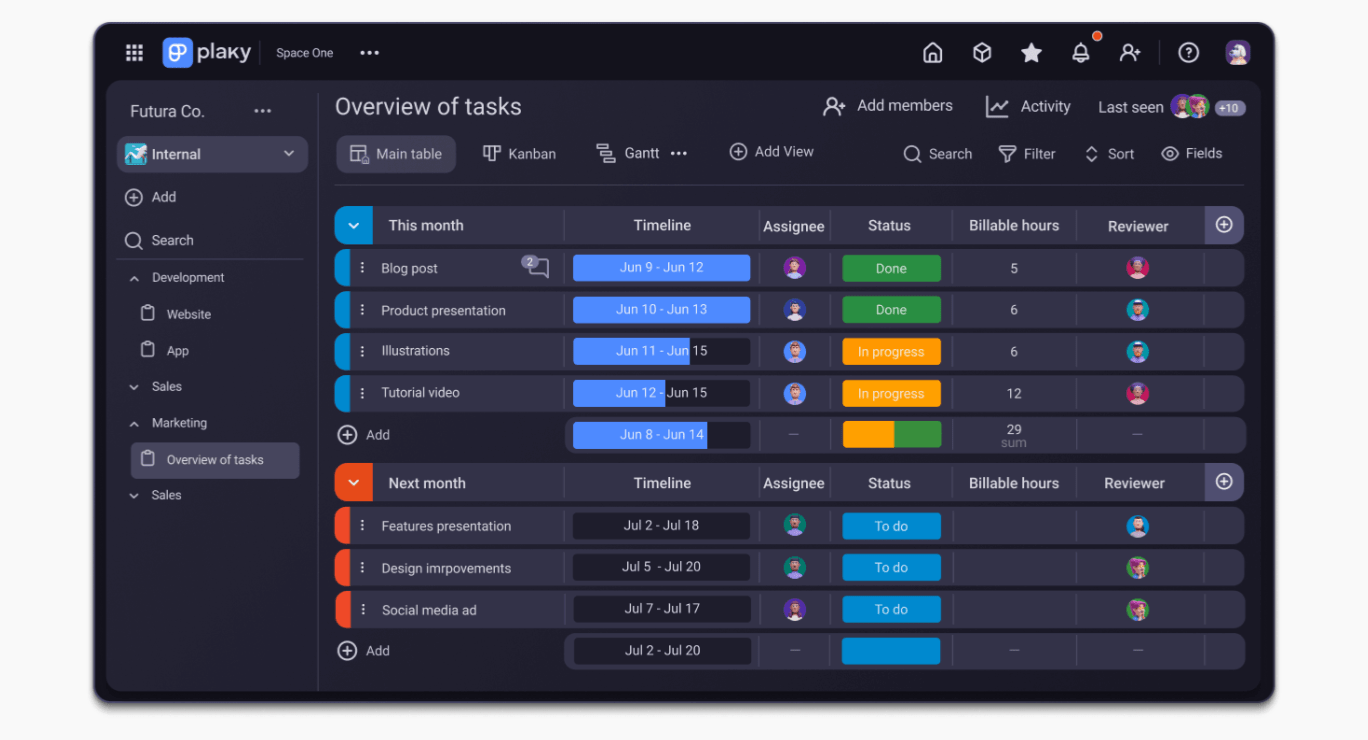
Key Features:
- Task assignment and progress tracking
- Multiple project views (list, Kanban)
- Real-time collaboration
Pros: Great for teams
Cons: Limited individual features
Pricing: Free; premium plans start at $3.99/month
Best For: Teams and small businesses
Why You Need a Planner App?
Relying on mental notes or scattered sticky papers often leads to frustration and inefficiency. For many, traditional methods like paper planners may seem reliable, but they often lack the flexibility and convenience required in modern life.
Here’s where digital planner apps shine. These tools go beyond simple organization, offering robust features that make managing your time and goals easier than ever:
1. Time Management Made Simple
Planner apps help you prioritize tasks, set deadlines, and allocate time effectively. With features like reminders and calendar integrations, you’re less likely to miss important appointments or overbook your schedule.
2. Goal Tracking for Better Results
Many planner apps include goal-setting features, allowing you to track progress on both short- and long-term objectives. Whether it’s a daily workout routine or a multi-phase project, these tools keep you accountable and focused.
3. Stress Reduction and Improved Focus
Having a clear plan reduces mental clutter, helping you concentrate on what matters most. Automated updates and notifications ensure you stay on top of your responsibilities without the stress of constantly remembering everything.
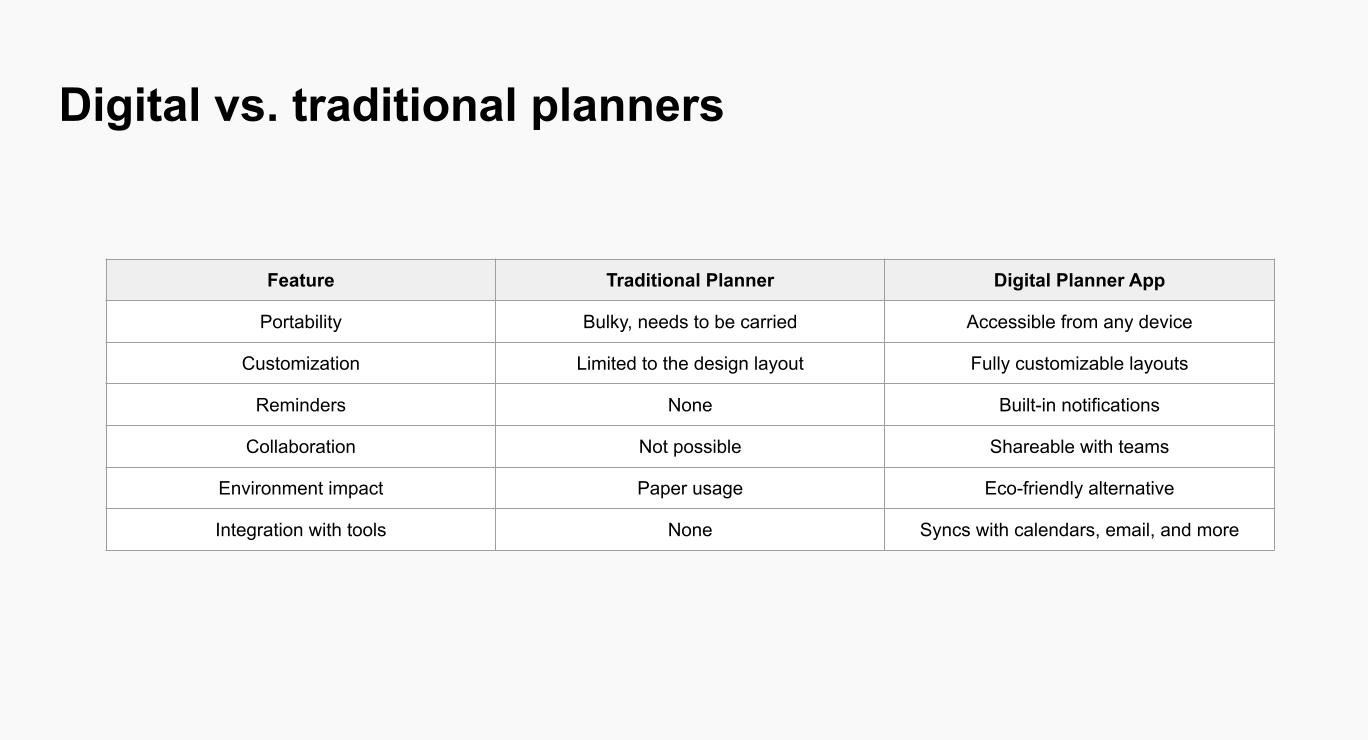
How to Get Started with Planyway
Planyway is a powerful planning tool designed to help you manage tasks and schedules seamlessly. Its Calendar View is a standout feature, offering a clear, visual way to organize your time and keep track of what’s ahead. Here’s how to get started with Planyway and make the most of its Calendar View:
1. Set Up Your Planyway Workspace
Sign up for Planyway with your Trello or Jira account. Choose the Calendar View to begin planning your schedule visually.
2. Explore the Calendar View Features
The Calendar View in Planyway lets you see your tasks, deadlines, and events all in one place.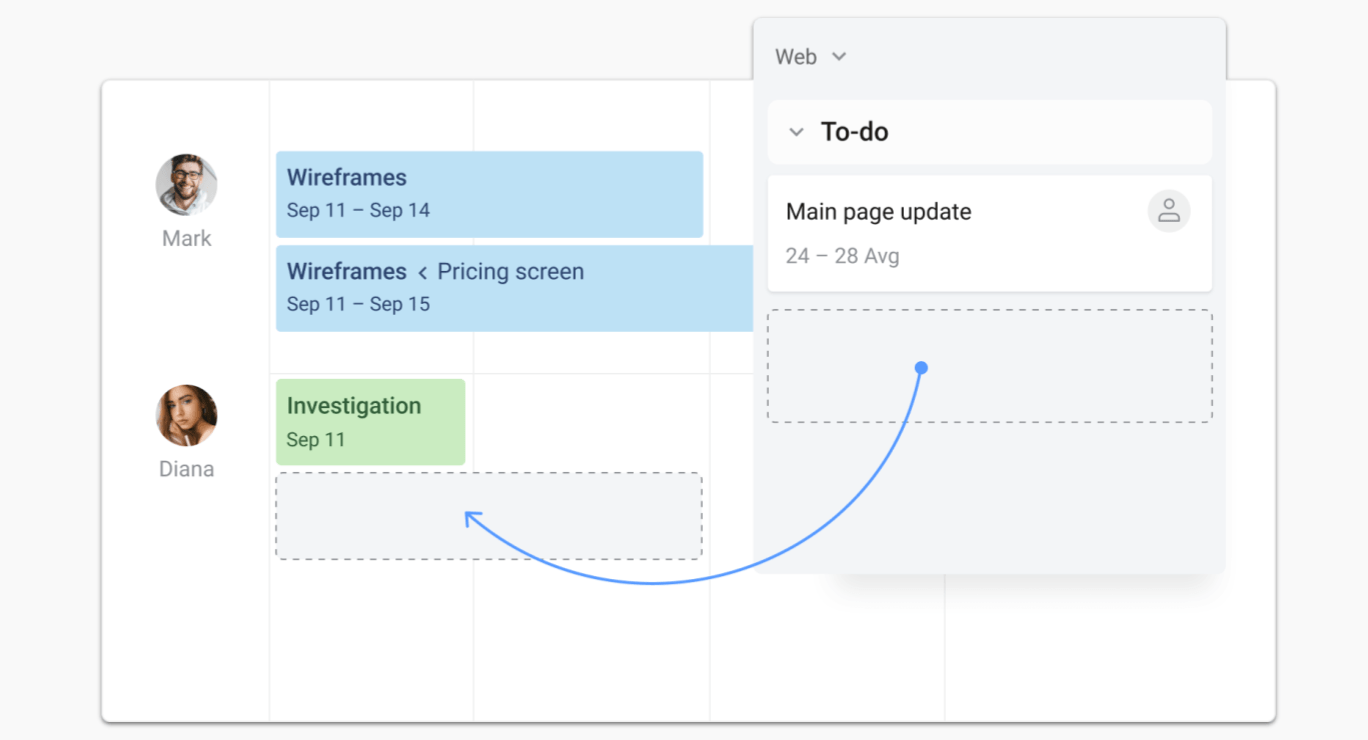
- Drag-and-Drop Scheduling: Move tasks to different days or times with a simple drag-and-drop action.
- Color-Coded Labels: Organize tasks by project or priority using color-coded tags for quick identification.
- Multiple Timeframes: Switch between daily, weekly, and monthly views to get a broader or more detailed picture of your schedule.
3. Add and Customize Tasks
Create tasks directly in the Calendar View by clicking on the desired date and time. Add details such as deadlines, descriptions, and tags to keep everything organized. Set reminders to ensure you never miss a crucial deadline.
4. Sync with Other Tools
Integrate Planyway for Trello with Google Calendar, Outlook, or other tools to keep all your events and tasks in one place. Changes made in Planyway’s Calendar View are automatically updated across your connected apps, ensuring consistency.
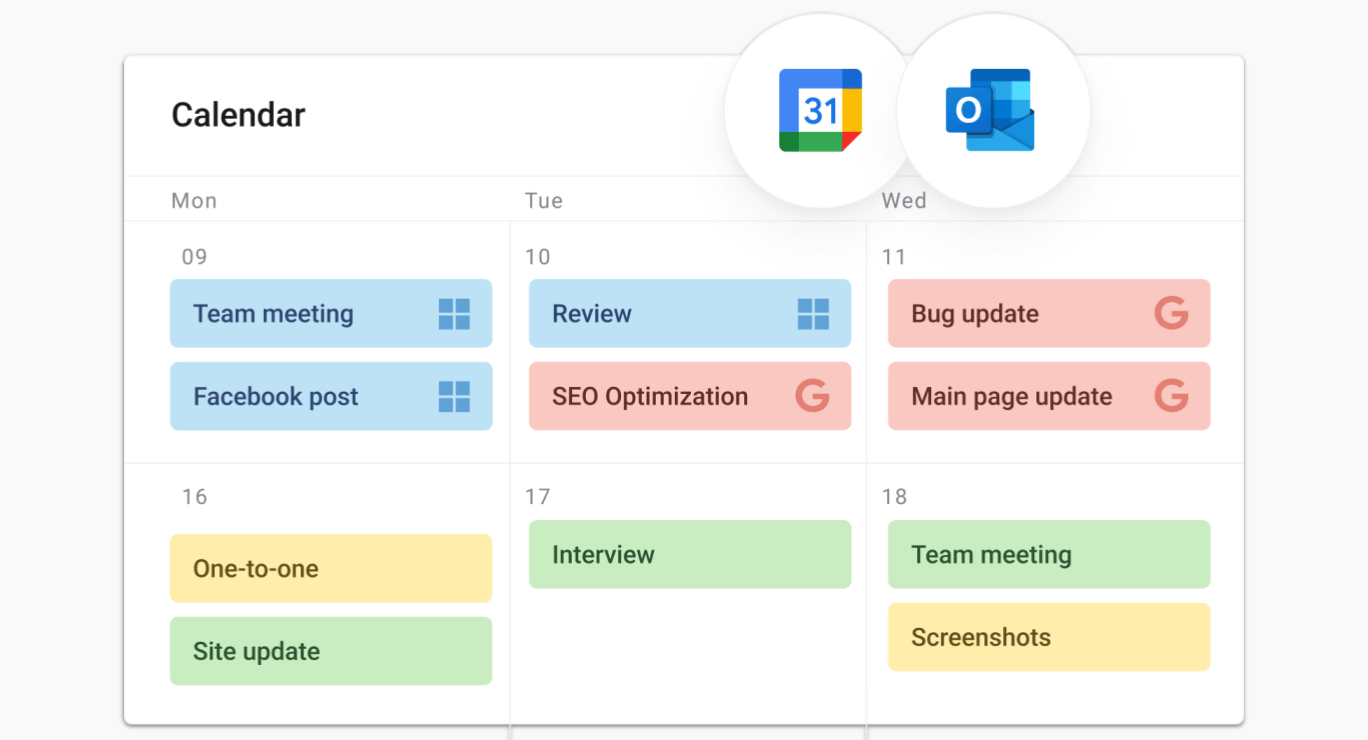
5. Collaborate with Your Team
Share your Calendar View with team members to align schedules and assign tasks. Use real-time updates to monitor progress and make adjustments as needed. Add comments to tasks directly within the calendar to keep communication streamlined.
How to choose the best planner app
Choosing the right planner app depends on your specific needs and how you plan to use it. With so many options available, understanding your use case and priorities is key to finding the perfect fit. Here’s how to decide:
1. If You’re Managing a Team
- Look for apps with robust collaboration features, such as task assignments, shared calendars, and real-time updates.
- Integration with tools like Slack, Jira, or Trello is essential for seamless workflow management.
- A Gantt chart or Kanban view can help visualize project timelines and task dependencies.
Recommended Apps: Planyway, Plaky, Asana
2. For Personal Life Organization
- Simplicity is key. Choose an app with a clean interface and intuitive task management features.
- Apps with habit tracking, goal-setting, and customizable layouts can enhance personal productivity.
- Look for apps that sync with your favorite calendar tool for effortless scheduling.
Recommended Apps: Google Calendar, Todoist, Any.do, Planyway
Conclusion
Choosing the right planner app is more than just picking a tool—it’s about finding a solution that simplifies your life, keeps you organized, and helps you achieve your goals. The best planner apps not only streamline your schedule but also boost your productivity and reduce stress, whether you’re managing a team or organizing your personal life.
With so many excellent options to choose from, there’s no better time to take the first step toward better planning.
About the Author
Violetta Chernobuk is a skilled content strategist and writer at Planyway, specializing in crafting insightful and engaging articles on productivity and project management. With her keen eye for detail and a deep understanding of user needs, Violetta ensures that every piece of content is both informative and inspiring, helping readers optimize their workflows and stay ahead in their projects.
